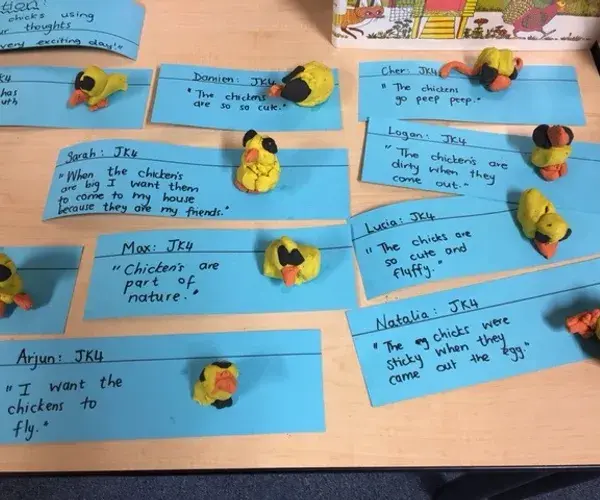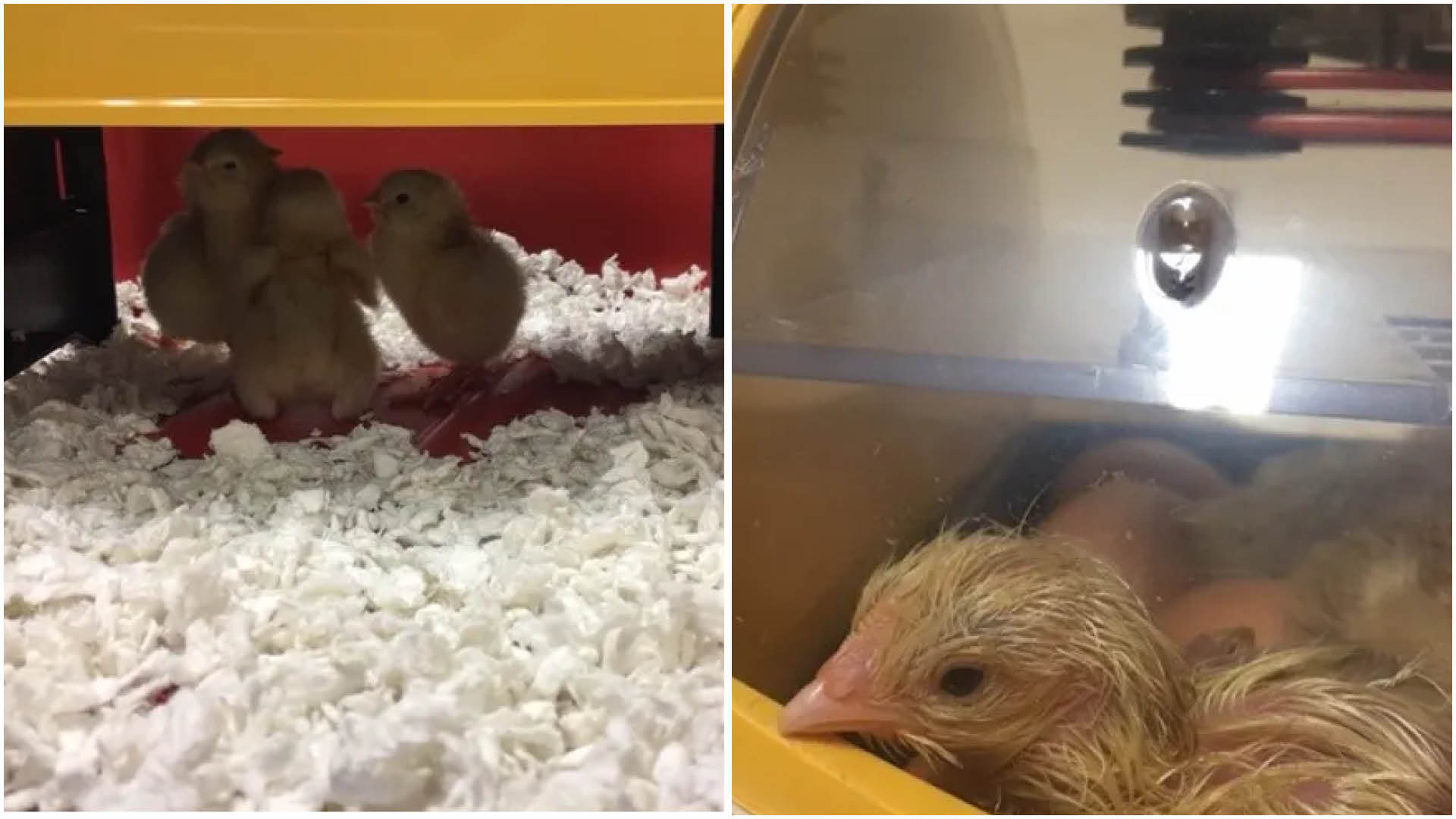An early years 'Eggsellent' inquiry
As part of our Kindergarten programme, we provide our children with rich learning engagements that allow the students to use their creativity, problem solving and critical thinking skills. We also model a transdisciplinary approach to learning so students are building their understanding about science, mathematics, languages and the arts through a hands-on, play-based model.

During November and December, Senior and Junior Kindergarten were both working under the Transdisciplinary Theme of Sharing the Planet which involved inquiring about living things. Our youngest learners in Pre-Kindergarten were inquiring into communities and the responsibilities we have as members. With all of these units fitting together nicely, we decided that it would be a wonderful experience for our students to hatch hen eggs.
We first purchased an incubator, a heater and 24 hen eggs from a local distributor. They were set up in the kindergarten pod and the excitement soon rippled throughout the learning environment. Soon the children were making predictions about what was inside the eggs. These ideas covered everything from a tiny omelet to a mermaid.

Using a large calendar, a countdown was initiated leading up to the hatching date at the end of a 21-day period. The students used their research skills to look up information in nonfiction texts. They used the features of a text to help guide them as they drew pictures, wrote information and shared their knowledge with each other. We used a powerful candling light that allowed us to have a look inside the eggs and see the development of the embryo.
In connection with the various central ideas, the students predicted what the chicks would need in order to survive once they hatched. We decided on the necessities of food, water, shelter, a soft bed and a safe place. We created the area and we waited. We also discussed what the role of the incubator was and how it was helping the chicks grow.
On 24 November, the excitement really began. The first shelled pipped. A pip is when the baby chick punctures the hard shell for the first time. In order to properly prepare the children, a video had been shown of a chick hatching so they knew what to expect. They knew it could be a long process and that we were not to interfere. Our Digital Learning Coach, Joe Teft, set up a live feed that was connected to all of the Kindergarten classrooms so they could watch the action. There was cheering and clapping when the chicks began to hatch. Slowly at first, but then with the encouraging peeping of their siblings, the chicks began hatching one after another. They came out looking rather worse for wear, but soon enough were fluffy yellow birds. In total, we had 16 chickens hatch.
For two and a half weeks, the students observed the chickens grow and change. They recorded the changes they observed, created sculptures of the chicks with Sandra Ebsworth, our Integrated Arts Specialist, and wrote reflections on their learning with their homeroom teachers. The chickens quickly began to eat and drink from the dishes we had provided. They began growing wing feathers and becoming much more mobile. We had one escape which caused much panic and frightened peeping from the others until they were reunited. The children had the opportunity to touch them and observe them up close. They were even brought outside and given room to explore the Outdoor Discovery Centre.
Luckily for us, a number of families within our CIS community raise chickens at home. We found homes for 10 of our flock and continue to receive updates on their well-being. The other six returned to the breeder and have found homes in Singapore. The students were very sad to see the chicks leave. An impromptu shrine of sorts has been created in the pod. There are love letters to the chicks posted where the incubator once stood. I think we can all agree that this was an amazing opportunity for our students to learn about the world around, how to care for living things and most importantly foster a love for learning.